The intriguing Junagarh Fort, Bikaner, Rajasthan || One of the very few forts in India that is built on plains and remained largely safe from conquests
The Junagarh Fort, despite the name, isn't located in Junagadh, Gujarat. It is a fort in Bikaner. The word Juna or जूना means "Old". The rulers who got the fort built did not name it Junagarh obviously. It was only when the Royal Family moved to the new Lallgarh Palace in the early 20th century, was this fort renamed Junagarh. The original name of the fort was Chintamani. I know, unusual name for a fort.
This fort is also unusual because it isn't built on a hilltop. However, the fort has never really been successfully seized despite several attacks. As per records, it was only taken for one day by Kamran Mirza, the second son of Emperor Babur, in 1534. At that time, Bikaner was ruled by Rao Raja Jait Singh.
Related Blogpost - Hotel Jaswant Bhawan, Bikaner || Well located near Old town, reasonably priced, clean and comfortable hotel with comfortable parking for cars of all sizes
The entrance ticket for the fort is Rs 100 per person for Indian citizens. The services of a guide was included in the charges as were the charges for a camera. Also, they only allow entry to the fort in batches of 15-20 people accompanied by a guide. This feels a little strange, and the fact was that the guide did not really cover the place well.
Related Blogpost - The magnificent Lallgarh Palace in Bikaner, Rajasthan, India | A 4-star Heritage Hotel that can be a suitable stay option if you want to splurge a little
For example, right next to the Daulat Pol (one of the gates of the Junagarh Fort) are 41 handprints of women. Allegedly these are handprints of the queens who committed Sati after their kings were killed in battle. Our guide didn't even talk about these. I only found out about these when I was reading up on the fort post our visit.
Reading about these made me feel very weird. Abolishing Sati was perhaps the best decision anyone ever made. I read about the last Sati that was committed in Junagarh fort. It was apparently by Rani Deep Kanwar, who was married to Maharaj Moti Singh, the second son of Maharaja Surat Singh. When Maharaj Moti Singh died in 1825, Deep Kanwar committed Sati (https://www.indianrajputs.com/view/bikaner). The British abolished Sati in 1829. Somehow, knowing the name of one of the Satis, makes me feel even weirder.
Anyway, moving on from that morbid topic. Let's talk about how the Fort became what it is today. It wasn't built in a day. In fact, it took generations of Maharajas who kept on adding newer palaces to the fort. It all started with Raja Rai Singhji, the sixth ruler of Bikaner. The foundation for the fort was laid on 17 Feb 1589, and the construction completed on 17 January 1594.
Related Blogpost - Johda or an old bath pool near the Beehad in Fatehpur on Agra-Bikaner Highway in Rajasthan, India || A great spot to stretch your legs and click a few photographs
He built the Phool Mahal, which is the oldest part of the fort. The Phool Mahal is a beautiful chamber with intricate floral patterns on its wall. Apart from the floral patterns the walls are also adorned with paintings depicting Lord Krishna and Radha's love story.
Related Blogpost - City of Lakes, Udaipur - One of the most popular tourist destinations in Rajasthan and top places to explore in the city
Vijay spent good time clicking pictures while I tried to keep up with the guide to listen in to what he was telling the people. The Fort had a lot of passages and staircases and it was also difficult to ensure that Vijay knew where we were headed. So you can imagine the huge responsibility I carry on my shoulders.
Karan Mahal is another palace inside the fort and it was built by Maharaja Karan Singh ji in 1680 to celebrate his victory over Aurangzeb. The palace consists of balconies and gardens. And later the mahal was painted red and gold and patterns of glass were added to it by Maharaja Surat Singh and Maharaja Anup Singh.
Related Blogpost - Great example of Rajput Architecture & Ruins of Rana Kumbha Palace inside unique UNESCO World Heritage site and India's largest fort in Chittorgarh, Rajasthan
When Maharaja Anup Singh ji built the Anup Mahal, craftsmen from all over were invited to decorate it. The result was an opulent structure decorated with intricate lacquer work of gold leaves, and lattice windows and balconies. The palace also boasts of a floor with Italian tiles.
Related Blogpost - Kumbhalgarh Fort of Royal Rajasthan - A grand example of Indian defence Architecture within the second Longest Wall in the world
Chandra Mahal was built by Maharaja Gaj Singh who ruled Bikaner from 1746 to 1787. With its gold plated embellishments, this palace is the most opulent of all. The mirrors in the chamber are placed in such a way that the King could see anyone entering this palace, from his bed.
Badal Mahal is an extension of Anup Mahal and uses bright tiles in blue and white color, creating a pleasant ambience. Maharaja Dungar Singh, who ruled Bikaner from 1872 to 1887 built this palace. The idea behind the theme of this palace was to induce rains and pleasant weather in Bikaner.
Apart from these amazing palaces in Junagarh Fort, there is also the Vikram Vilas Durbar Hall. This hall was added to the Junagarh museum in 1935 and has been converted into a museum. These halls are a part of the Ganga Niwas Palace that was built Maharaja Ganga Singh ji.
This museum houses myriad artefacts, such as arms and armory across ages, guns of various shapes and sizes, howdahs that were used as seats on elephants and camels, jhulas, coins and various items of household use. The museum also houses some Sanskrit and Persian texts. And it also houses a fighter plane!
Yes, you heard it right. While walking through the halls of Ganga Mahal, you suddenly come across a fully assembled fighter plane. It is a rather fantastic experience seeing it there considering all the entrances are rather tiny. We were wondering how this plane got here.
There are two aspects to this puzzle. One, what is an old fighter plane doing in a museum in remote Rajasthan? And second, how did this plane enter this old building that wasn't constructed in a way so that a plane can enter the premises. The answer to both these questions lies probably in the story of Maharaja Ganga Singh ji's successful collaboration with the British.
Maharaja Ganga Singh ji ruled Bikaner from 1888, when he succeeded his brother Maharaja Dungar Singh Ji, till his death in 1943. He was a trained military man and administrator and this showed in the heights that Bikaner reached during his reign. He was not only an effective ruler, but also a visionary.
Some of the notable reforms that Bikaner saw in his reign were the establishment of the Chief Court in Bikaner and the abolishment of child marriage. This court was presided over by a Chief Judge who was assisted by two assistant Judges. Bikaner was the first state in Rajasthan to take such a step.
And Maharaja Ganga Singh Ji did not stop just at that. In 1913 he announced the establishment of a Representative Assembly. And then he went ahead and established a High Court with a Chief Justice and two sub-judges in 1922. He then became the first to confer the full charter of power to high court. Talk about delegation. Maharaja Ganga Singh Ji was a natural at it.
He introduced a life insurance and Endowment Assurance Scheme for the benefit of the employees and the option of a saving bank was offered to the people. He was one of the first rulers to introduce through legislation a Sharda Act by which child marriages were stopped. If this was not a visionary King, then I don't know what is.
So it wasn't really such a big surprise when Maharaja Ganga Singh ji established the Bikaner Camel Corps, a troop of army on camel backs, that led several successful offensives over the years, for example, the Boxer Rebellion in China in 1900 and in Somalia in 1902-04.
In 1914, Maharaja Ganga Singh offered the British a 500-strong camel corps. This was called the Ganga Risala. According to the historian Vinay Nalwa, the maharaja “was the first among the Indian kings to be conferred the rank of General by British Emperor”, and was also the only non-white participant in the Imperial War Cabinet."
The Ganga Risala was defended the Suez Canal in Egypt in 1919 from Turkish advances successfully. This exploit inspired the formation of Commonwealth troops for arid places such as the Palestine and Sinai. The Ganga Risala was deployed again in World War II in the Middle East.
After the successes of this regiment, the British Government allegedly presented several war souvenirs to Bikaner State and among these were the shot down parts of two DH-9 de Havilland warplanes.
These planes were built in Hertfordshire, England and were used for bombing German Cities in 1918. Their pieces arrived in Bikaner in 1920 and then it is believed that Ganga Singh's son Maharaja Karni Singh Ji with the help of local craftspeople assembled one of the planes and put it on display in the Vikram Vilas Durbar Hall, in Junagarh Fort.
I realize that this post has become more about Maharaja Ganga Singh ji than about Junagarh Fort, but researching on this visionary King, I found myself having several fangirl moments.
Anyway, back to the Junagarh Fort, it is indeed a fantastic place to see in Bikaner. And I know I always say this, but I wish I had read up more about the place before he visit so that I would know what I was looking at when I was going through the various palaces and the museum.
Junagarh Fort was the first place we saw at Bikaner and it set the bar rather high for rest of the attractions. And while researching this place, I learnt so much about the history of Bikaner that I am rather fascinated by the city right now. I think this is the high one gets from travel, and it is better than any other high one gets from any other addiction.

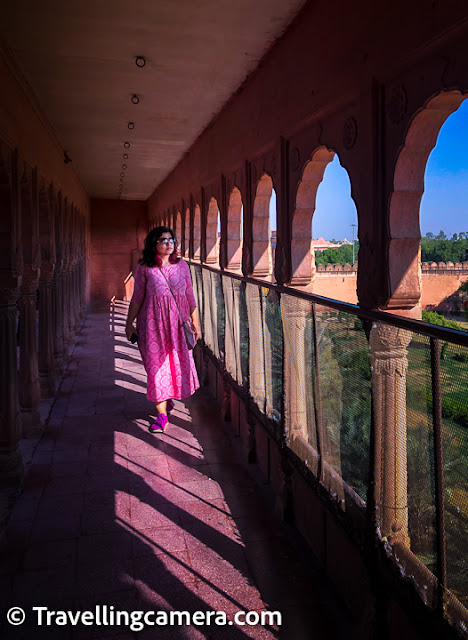
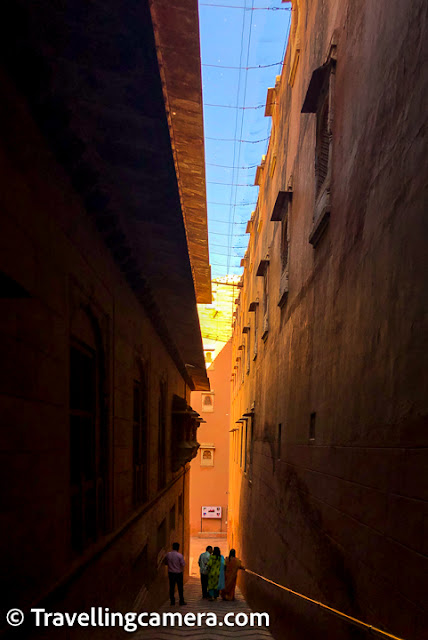









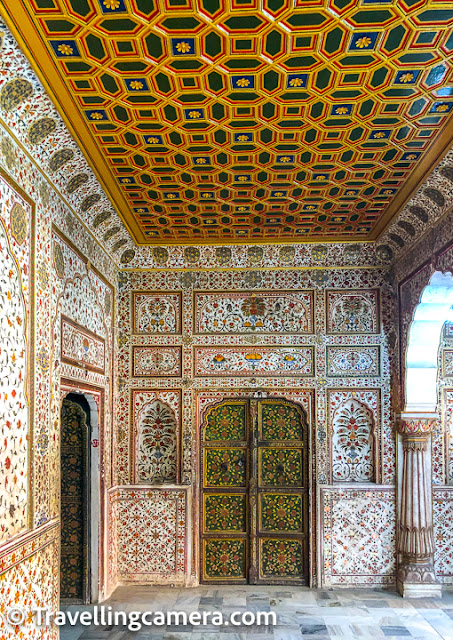
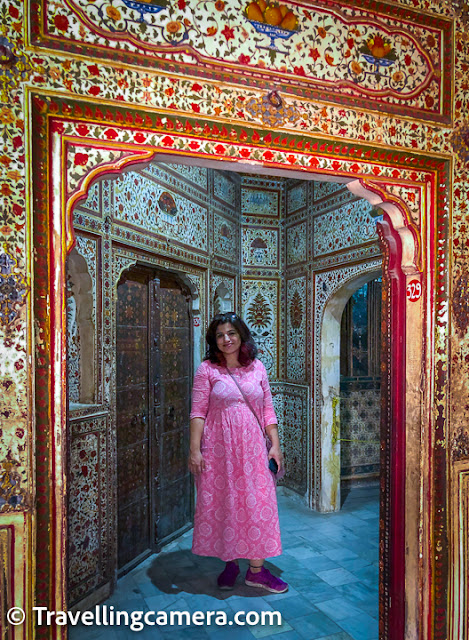

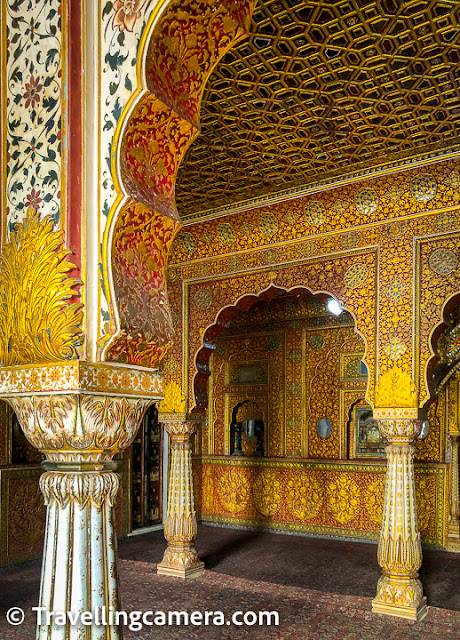
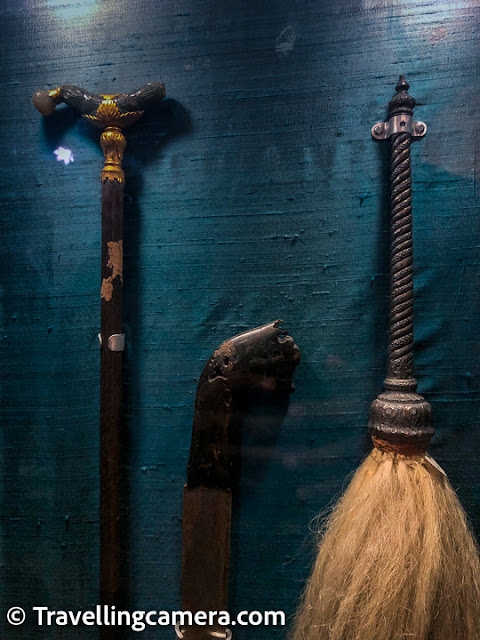
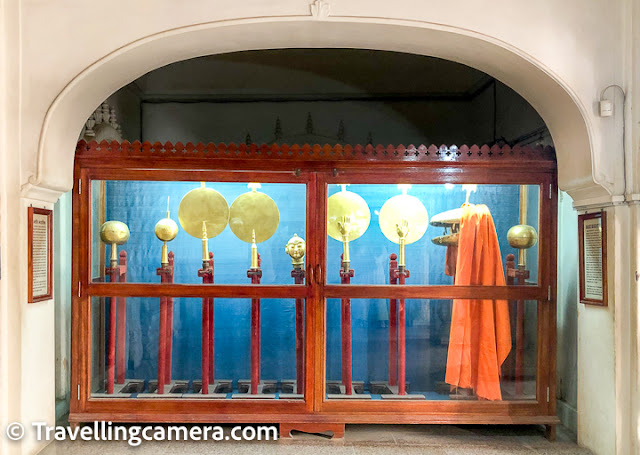


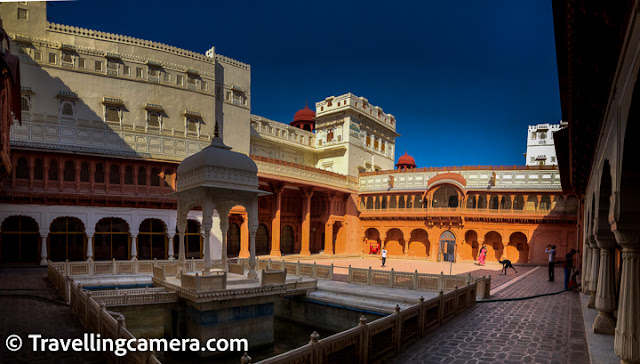



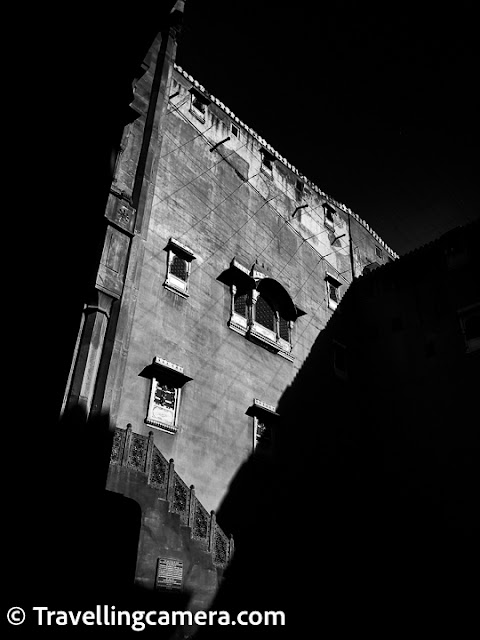



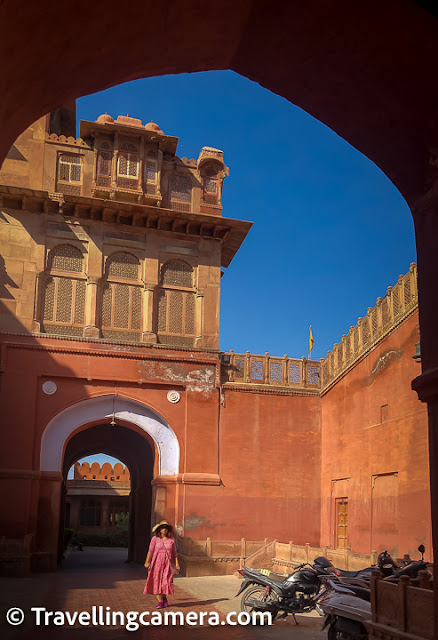
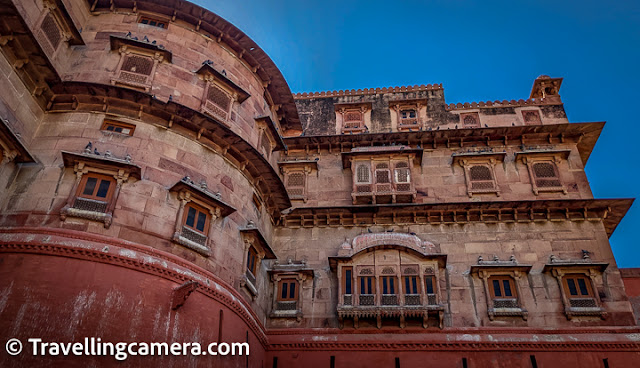

.jpg)
Comments